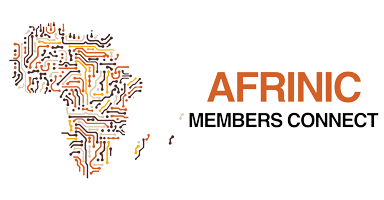23 November 2022
The AFRINIC Members Connect continued for our members with another series of insightful presentations on the second day of activity.
Abiade Dosomnu started with a presentation on the AWS Cloud Adoption Framework. Organizations today use several tools and services to migrate their workloads to the cloud. However, without a cloud transformational plan, moving workloads from on-prem to the cloud might not provide all the benefits of moving to the cloud. Abiade Dosunmu walked us through the AWS Cloud Adoption Framework AWS CAF which addresses these gaps.
More about this presentation on the video available here.
You may view the slides here.
Mr Mbong Hudson Ekwoge presented a Blueprint on AWS as a reference architecture for financial-technology (fintech) applications designed for companies that want to manage their business-to-business (B2B) or business-to-consumer (B2C) fintech software on the cloud.
Hudson detailed the deployment mechanisms of the architecture through a stepwise approach and operational best practices.
You may view the slides here.
The video of this presentation is available here.
In her Tech Capsule: Peering best practices, Sara Alamin shared some stats from African IXPs. Africa has 56 IXPs, out of which 5 were created between 2019 and 2022. Sara also shared the three metrics to measure growth in an IXP network, these are Traffic size, Members and Peering density.
Sara presented the results of the study through several connected networks.
The session also addressed quality vs quantity, and insisted on the importance quality as measured using RIPE Atlas probes and trace-route to the validation destination.
Sara presented results from Rwanda and Kenya with some examples of malpractice such as peering at your IXP, misconfiguration and using wrong filters. Several recommendations for peering best practices were provided during the presentation.
More about this presentation on the video of this presentation is available here.
You may view the slides here
Mr Stephen Honlue demonstrated how to automate Route server configurations using IXP Manager. IXP Manager is an open-source tool used to automate many services (Route servers, looking glass, Route collectors, Graphing,...) at an IXP.
He demonstrated features of IXP Manager specifically, how to add a route server to an IXP Manager instance and concluded with the installation and configuration of a route server using BIRD2 on an Ubuntu machine.
More about this presentation on the video of this presentation is available here.
You may view the slides here.
Sylvain Baya and Christian Nzhie made a presentation on ‘’A Vision of the NOG's Ecosystem in the AfriNIC Service Region’’ highlighting some problems in the AFRINIC Service region. The speakers highlighted it is crucial to address those problems to grow the Internet within this region and highlighted as follows:
(i) at the individual level.
(ii) level of country (local) participation towards a collaborative/community-based development of the Internet infrastructure in the African region.
The presentation highlighted that we could address those problems through a vibrant, effective and diverse NOG community where each *ccNOG* is appropriately connected to deliver its public service contribution for the good of both country and the whole sub-region.
More about this presentation on the video of this presentation is available here.
You may view the slides here.
Mr Barrack Otieno defined community networks and stated that ISOC has been championing the community network movement. Mr Otieno presented the works of aherinet, a community network in the Western part of Kenya.
Barrack highlighted the importance of moving away from the consumer narrative of thinking locally and acting globally by designing and deploying products and services at the local level.
Finally, Barrack addressed how Community Networks can contribute to better use of Internet Resources in Africa, how can Community Networks help champion the growth of local content and growth of local Internet traffic, and can AFRINIC help Community Networks as part of social responsibility.
More about this presentation on the video of this presentation is available here.
You may view the slides here.
